By
Team DIGO | 06/06/2019 | in

On this week’s episode of The A-List Podcast, host and DiMassimo Goldstein CCO Tom Christmann is joined by Prentice Howe, Owner and Chief Creative Officer of Door No. 3, an Austin based full service marketing agency that focuses on turning challengers into empowered challengers through brand activation.
Working with some of America’s most iconic brands such as Minute Maid, Anheuser-Busch, and the Dallas Cowboys, Prentice has developed a unique talent and passion for helping challenger brands stand out against their industry giants in a crowded consumer marketplace.
Author of the Amazon Best Seller Empowered Challenger Brand, Prentice’s work has been recognized national and internationally in shows such as Cannes Lions, London International Advertising Awards, the Webby Awards and Communication Arts. Oh, did we mention he spent 5 years out in LA trying his hand at screenwriting? Hear more below!
- [0:00 – 1:18] Intro
- [1:18 – 2:20] Honolulu born, and Boston raised, Prentice ends up finding his roots in Texas once he starts attending SMU.
- [2:20 – 3:57] Taking an Intro to Advertising class at SMU that quickly changed his anticipation of being a business major, finding a passion for the advertising industry and starting to build a creative portfolio
- [3:58 – 5:58] The jump starts to his career— working on accounts such as Anheuser-Busch while traveling and building his portfolio along the way
- [5:58 – 10:28] Mentions of some of his first work produced in the industry and learning that eliciting emotion doesn’t always evolve by just “being funny”
- [10:28 – 14:40] Leaving Texas to try out life in LA writing screenplays, “failing forward”, and an interaction with a neighbor that helped him realize his passion for advertising as a career.
- [14:40 – 20:40] Starting work at Door Number 3 as an ECD, strategies for dealing with imposters syndrome, nurturing your network and finding the right people to surround yourself with
- [20:40 – 23:25] Taking a leap of faith moving to Detroit to become a Creative Director at Donor to soon hearing Door Number 3 knocking on the door again, deciding to buy the agency and officially making Austin home.
- [23:25 – 27:40] Door Number 3’s homecoming, refreshing the agency’s brand identity, creating their positioning strategy and writing a book called the Empowered Challenger Playbook
- [27:40 – 34:55] Discussing some rising challenger brands, the process of writing the Empowered Challenger Playbook and a look into Prentice’s daily routine
- [34:55 – 38:47] What the city of Austin and its advertising landscape looks like
- [38:47 – 46:45] Discussing evolving industry trends, his take as a business owner and his advice for young people in the industry
- [46:45 – 48:55] Outro
“The A-List” is a podcast produced by DiMassimo Goldstein, an inspiring action agency, recorded at the Gramercy Post, and sponsored by the Adhouse Advertising School, New York’s newest, smallest, and hippest ad school. You can subscribe and rate the show on iTunes or listen along on SoundCloud. For updates on upcoming episodes and guests, be sure to like the A-List Podcast on Facebook and follow host Tom Christmann on Twitter.
By
Team DIGO | 05/30/2019 | in


On this week’s episode of The A-List Podcast, host and DiMassimo Goldstein CCO Tom Christmann is joined by Ricardo Casal and Juan Javier Pena, Creative Directors at DAVID The Agency, an agency founded in Buenos Aires that exemplifies the “always on” approach to advertising.
Ricardo and Juan’s professional experience together began in Ecuador with their joined college projects jumpstarting their career and leading them to internships and ultimately to becoming, now, creative directors for an internationally renowned agency.
In this episode, they share the story of their undeniable interest in advertising, their thoughts on culture hacking, what attracted them about working at David, and much more. Take a page out of their book by listening below!
Show Notes:
- [0:00 – 2:20] Intro
- [2:28 – 11:25] Attending college together in Ecuador and meeting through working on ideas and submissions for student award shows, winning scholarships to an advertising school in Buenos Aires
- [11:30 – 16:11] Creating a brotherhood through a shared love for advertising and utilizing advertising award winners as a way to learn, study, and gain inspiration
- [16:40 – 23:30] Interning at TWBA in Argentina right out of college, Flying to the U.S to interview with David the Agency, Why they believe David is different and stands out from the rest and what they enjoy about working there
- [24:45 – 32:26] Learning their thoughts on the phrase “If you own data, you own the world” and their interpretation of the “data takeover” happening in the industry right now
- [32:30 – 40:50] How they capitalize on “Culture-Hacking” at David and what their strategy is in doing so, Their controversial and impressive MACMA Man Boob campaign for breast cancer
- [40:54 – 43:26] What makes the Burger King account so special to them and the importance of building client trust and relationships while also sharing the same visions and ambitions
- [43:27 – 45:40] Taking a guess on where they would be if they weren’t in advertising
- [46:00 – 51:37] The importance of gaining fresh perspectives in order to be inspired and to inspire others. How to keep faith in what can be a cynical industry at times
- [52:50 – 54:45] Outro
“The A-List” is a podcast produced by DiMassimo Goldstein, an inspiring action agency, recorded at the Gramercy Post, and sponsored by the Adhouse Advertising School, New York’s newest, smallest, and hippest ad school. You can subscribe and rate the show on iTunes or listen along on SoundCloud. For updates on upcoming episodes and guests, be sure to like the A-List Podcast on Facebook and follow host Tom Christmann on Twitter.
By
Team DIGO | 05/29/2019 | in
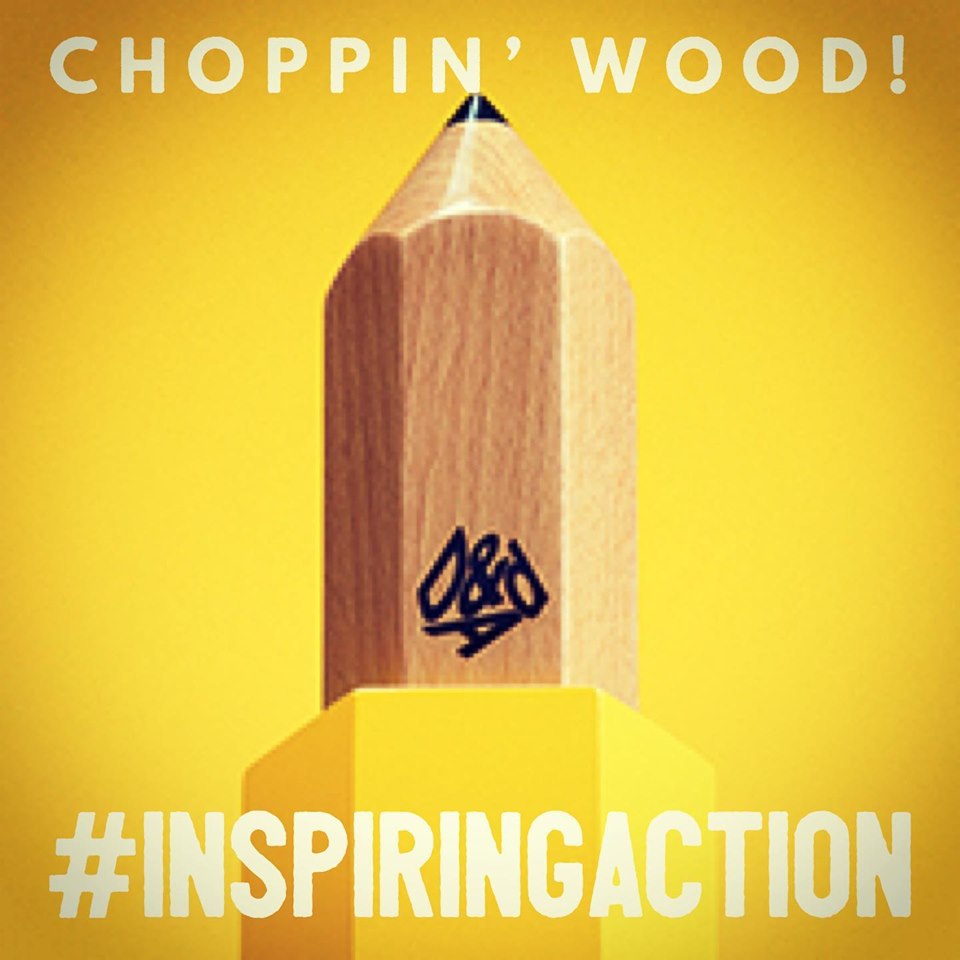
We’re thrilled to announce that our FyreStock video for Shutterstock has been awarded a prestigious D&AD Wood Pencil in the “Use of Trends and Tactical Marketing” category. It’s such an honor for all of us at DiMassimo Goldstein to receive this award along with our amazing clients at Shutterstock. You just can’t put out the Fyre on this dynamic duo!
Check out our #InspiringAction video below.
By
Team DIGO | 05/23/2019 | in

On this week’s episode of The A-List Podcast, host and DiMassimo Goldstein CCO Tom Christmann is joined by Dhruv Nanda, Creative Director and Writer at Oberland, a New York based agency with a mission to create purpose-driven campaigns for each of its clients.
Prior to working at Oberland, Dhruv has had a multitude of experience throughout the past 7 years in this industry. He has worked at a range of agencies including Wunderman, Ogilvy, Saatchi & Saatchi, and Momentum Worldwide while also getting a taste of what in-house creative was like at Chipotle.
In this episode, Dhruv shares his life growing up and what led him to his interest in advertising, the importance of brands having a mission behind them, removing ego’s to make for better work, advice on story telling for non profits, and much more. Hear it all below!
Show Notes:
- [0:00 – 1:28] Intro
- [1:29 – 5:45] From Growing up in Dubai to attending a private school in Zambia, Africa for 3 years
- [5:50 – 12:32] Leaving Africa to study Law at Carleton University in Canada, and working in a hardcore financial sales role right out of college
- [12:40 – 18:03] Learning the art of persuasion through sales, how reading the “Ogilvy in Advertising” book ultimately drove his attention to the industry, and his decision to attend Miami Ad School
- [18:54 – 24:00] His consistent interest in drawing comics, drama, and sketch comedy playing a role in his choice to become a Copywriter
- [24:29 – 30:40] His experience at Miami Ad School, and what meditation and being in the right mindset can do for creatives in this industry
- [31:10 – 38:10] How Interning at Draft Agency, PI&C, and MRY boosted his career in New York City. The surprises and challenges he faced going from ad school to “the real world”
- [39:40 – 44:48] The importance of building necessary client relationship standards, accepting the offer from Bill Oberlander to work for Oberland, and what working for a mission based company means to him
- [45:17 – 49:17] The difference between working at an in-house agency rather than out-house, his experience working alongside Steve Ells at Chipotle
- [49:22 – 55:00] Sharing advice on story telling for Not for Profit clients
- [55:09 – 57:10] The value he feels working as a professor at Adhouse, and where to find Druhv online
- [58:08 – 1:00:06] Outro
“The A-List” is a podcast produced by DiMassimo Goldstein, an inspiring action agency, recorded at the Gramercy Post, and sponsored by the Adhouse Advertising School, New York’s newest, smallest, and hippest ad school. You can subscribe and rate the show on iTunes or listen along on SoundCloud. For updates on upcoming episodes and guests, be sure to like the A-List Podcast on Facebook and follow host Tom Christmann on Twitter.
By
Team DIGO | 05/16/2019 | in
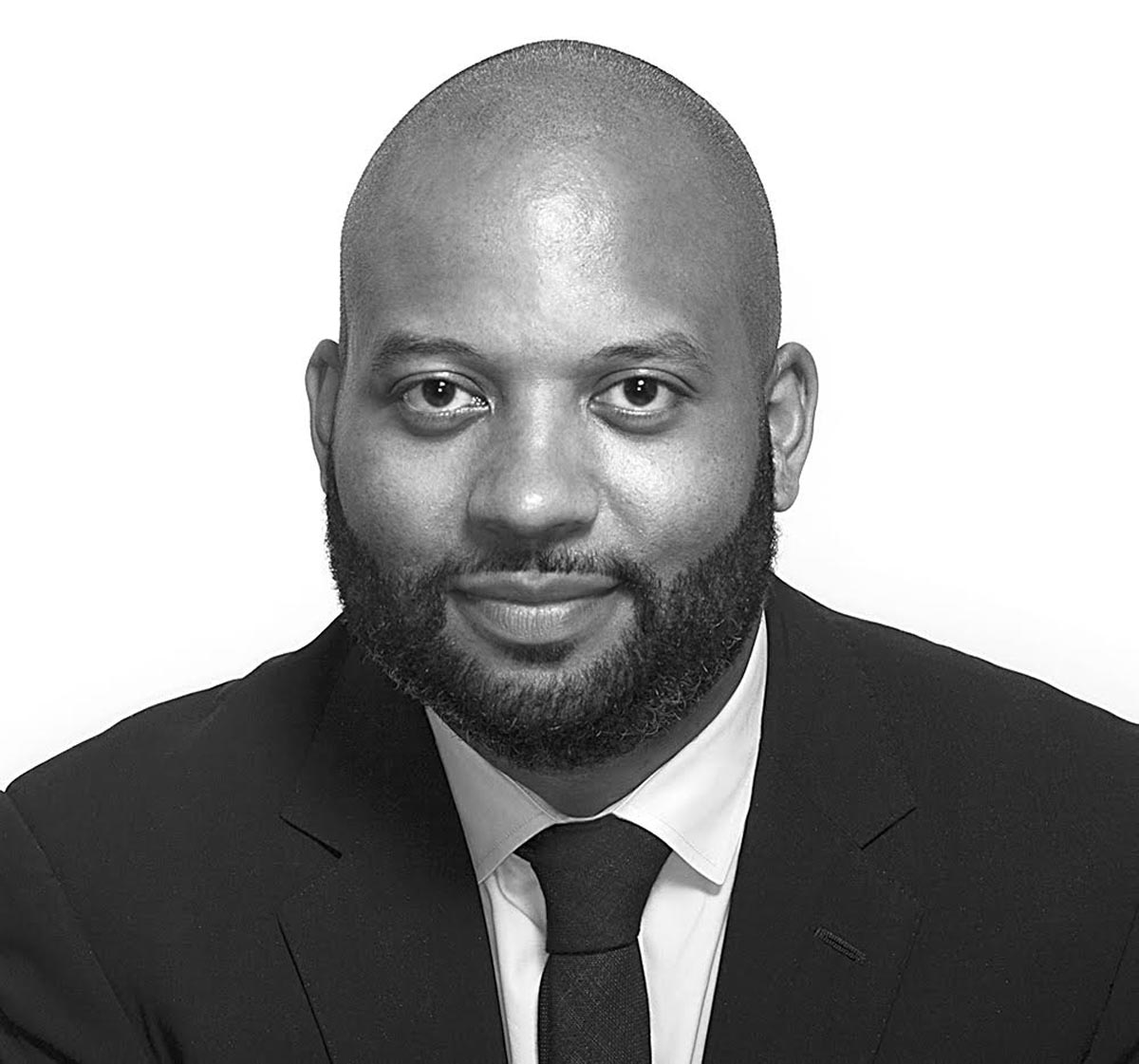
On this week’s episode of The A-List Podcast, host and DiMassimo Goldstein CCO Tom Christmann is joined by Bobby C. Martin Jr., founding partner of Original Champions of Design, a design and branding agency that builds better brands through informed and strategic identity system design.
In 2017, FastCompany named Martin Jr. one of the Most Creative People in Business. At OCD, Martin Jr. has led design projects for a wide range of clients such as the Girl Scouts of the USA, MTV, The New York Times, the National Basketball Association and the Studio Museum in Harlem to ensure their growth and creative goals.
Martin Jr. is one of the first pure designers to join The A-List Podcast, and offers a unique perspective having worked both in-house at brands and for external agencies. Tune in below!
Show Notes:
- [0:00 – 0:54] Intro
- [0:55 – 5:53] Growing up in Virginia to parents who were both educators, and how he still applies what of much he learned in his childhood to his career today
- [5:54 – 9:59] Falling in love with design in High School, and learning how to express himself visually
- [10:00 – 11:10] What he learned from design legend Paula Scher and “painting with type”
- [11:11 – 18:30] Martin Jr. talks about his early career and the job that introduced him to graphic design
- [18:31 – 20:40] How to manage young talent, the importance of being patient, and giving people the freedom to make mistakes
- [20:41 – 24:16] How to push clients to be bold while still being respectful
- [24:17 – 27:45] Why agencies and design firms need to be more integrated, and how the best campaigns have a seamlessness between advertising and design
- [27:46 – 33:34] Moving to New York City to work for Gear Magazine, and how that experience taught him relentless work ethic
- [33:35 – 38:35] Going back to graduate school, why he chose The School of Visual Arts, and the importance of osmosis learning
- [38:36 – 40:40] Martin Jr. dives into the research tactics that inform design
- [40:41 – 47:03] His experience as design director of the Jazz at Lincoln Center, and how he sold his ideas to Artistic Director Wynton Marsalis
- [47:04 – 50:10] Launching Original Champions of Design, and the philosophy of the agency
- [50:11 – 53:26] The pros and cons of both external and in-house agencies
- [53:27 – 56:31] How to help people understand design work, and why the designer needs to be involved at every step of the process
- [56:32 – 1:05:16] Rebranding the NBA logo for the first time in 48 years
- [1:05:17 – 1:06:12] Outro
“The A-List” is a podcast produced by DiMassimo Goldstein, an inspiring action agency, recorded at the Gramercy Post, and sponsored by the Adhouse Advertising School, New York’s newest, smallest, and hippest ad school. You can subscribe and rate the show on iTunes or listen along on SoundCloud. For updates on upcoming episodes and guests, be sure to like the A-List Podcast on Facebook and follow host Tom Christmann on Twitter.
By
Team DIGO | 05/09/2019 | in
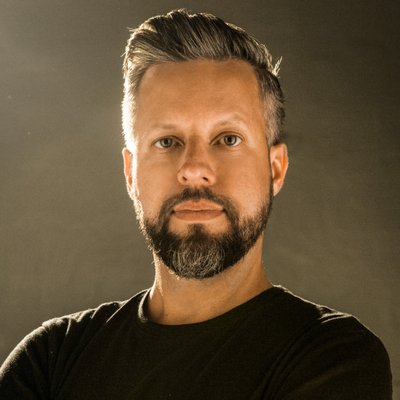
The wait is over… The A-List Podcast is back and we’re starting off HOT!
For the season’s premiere episode, host and DiMassimo Goldstein CCO Tom Christmann is joined by creative junkie and self-proclaimed ad nerd Anselmo Ramos, co-founder and Chief Creative Officer of GUT, an independent agency for brave clients and bold brands with offices in Miami, São Paolo and Beunos Aires.
Prior to launching GUT with co-founder Gastón Bigio, the two partners also founded DAVID The Agency. Under their leadership, the agency became a creative juggernaut and in 2017 was selected as Adweek’s Breakthrough Agency of the Year and Ad Age’s A-List Innovator Agency of the Year. In 2013, while serving as Chief Creative Officer at Ogilvy & Mather São Paulo, Ramos led the famous “Dove Real Beauty Sketches” campaign, which considered to be the most watched piece of branded content in history.
In this episode, Ramos shares the story behind that campaign, talks about writing ads in secondary languages and how it can make you a better writer, the legacy of David Ogilvy, the importance of discomfort, and much, much more. Hear it all below!
Show Notes:
- [0:00 – 1:58] Intro
- [1:59 – 7:59] Growing up in Brazil, attending a very creative High School with no grades, and his first job in advertising
- [8:00 – 13:34] Leaving Brazil to become a writer at Y&R Lisbon before moving again to Y&R Madrid
- [13:35 – 18:44] Coming to the U.S. to work for Y&R Miami, how writing in a foreign language strengthened his writing skills, and the strong advertising culture of São Paulo
- [18:45 – 24:47] His experience working at Lowe NY for Gary Goldsmith, turning down a dream offer from Tony Granger at Saatchi, and getting the call to become CCO at Ogilvy & Mather São Paulo
- [24:48 – 30:54] Living David Ogilvy’s legacy, creative visualization and believing in yourself, and how he used “Moneyball” tactics to recruit and turn the São Paulo office into the most creative Ogilvy office in the world
- [30:56 – 42:36] The story behind the famous “Dove Real Beauty Sketches” campaign, and the importance of finding brave clients
- [42:37 – 45:17] Opening DAVID, the amazing partnership with Fernando Machado of Burger King, and why he ultimately decided to take the leap and start GUT
- [45:18 – 49:22] Starting from scratch with GUT, the importance of discomfort, and moving fast and making mistakes
- [49:23 – 58:30] Ramos talks about the importance of continued learning, the Harvard course he is currently taking, and shares advice on leadership
- [58:31 – 1:02:55] The current state of advertising
- [1:02:56 – 1:04:07] Outro
“The A-List” is a podcast produced by DiMassimo Goldstein, an inspiring action agency, recorded at the Gramercy Post, and sponsored by the Adhouse Advertising School, New York’s newest, smallest, and hippest ad school. You can subscribe and rate the show on iTunes or listen along on SoundCloud. For updates on upcoming episodes and guests, be sure to like the A-List Podcast on Facebook and follow host Tom Christmann on Twitter.
By
Tom Christmann | 05/07/2019 | in
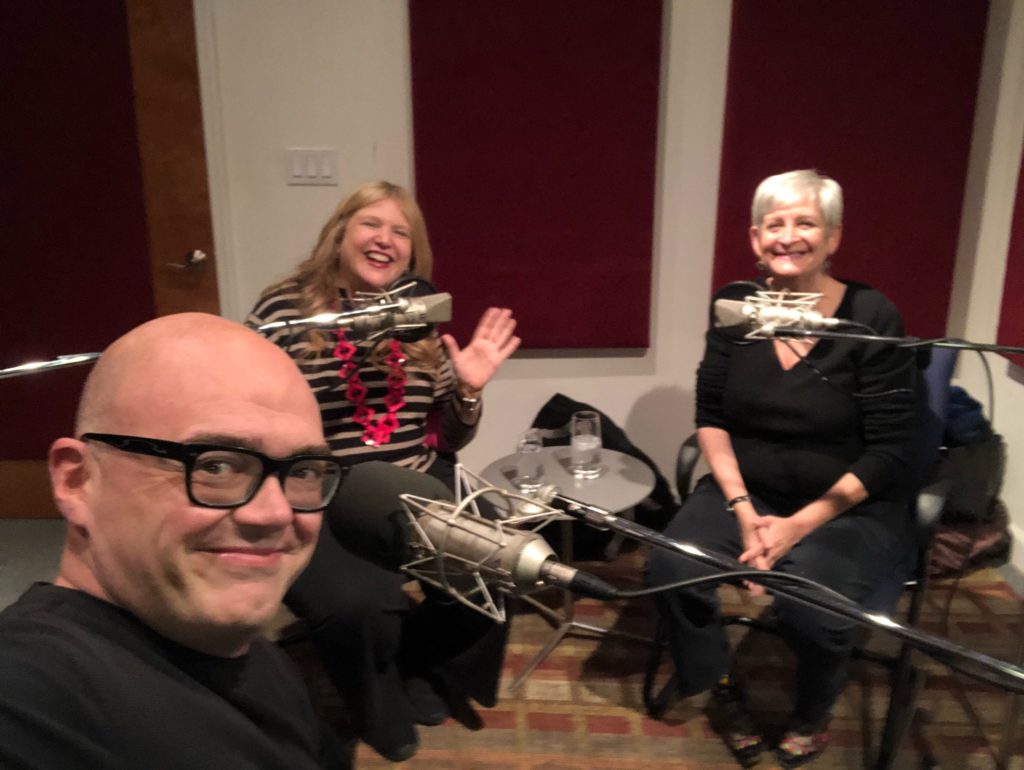
In the booth with Terri and Sandy (Season Two)
“Have you heard our podcast?”
Yes, we’ve become “that guy.” DiMassimo Goldstein has a podcast. No big deal. (Eyeroll emoji.) In all seriousness, we don’t actually talk about The A-List Podcast that much. Because we didn’t do it to make ourselves famous. We did it because we’re curious about creativity and we’re obsessed with starting conversations. Here’s how it happened:
My friend Lauren Slaff has an ad school called Adhouse. A couple of years ago, I noticed that her Facebook presence for the class needed an upgrade and offered to help. At DIGO, we talk a lot about Inspiring Action and resisting the urge to just make a straight-up ad hawking your wares, so of course my first thought was, “We need some hard-hitting print and banner ads!” It’s amazing how theories become so hard to follow in practice. Duh!
Yes, paid ads are important, but the first thing we needed to do was to get across the difference of Adhouse. As I say in every episode of The A-List Podcast, “[Adhouse’s] philosophy? An ad class is only as good as the professional who teaches it.” At Adhouse, you learn from the people who do the work in the very places where they do it. You literally go to the agency where your teacher works one night a week and show them your ideas. It’s the closest thing to breaking into the business you can get for six hundred bucks.
So a team worked on some ads. They were funny. But mostly they were ads. Clever headlines. Hard-hitting copy. Blah blah blah. And in the end, while they might get some people to notice Adhouse, they weren’t going to be great for the team’s book or for DiMassimo Goldstein. We’re an Inspiring Action agency. It says so in our lobby! We needed to innovate.

A reminder from our lobby at 220 E23rd Street. :)
That’s when we had a bigger idea: Let’s just interview some ad greats themselves, giving the audience a little taste of what it might be like to take an Adhouse class but also getting their ad stories. We eventually settled on their origin stories, partly out of not wanting the show to be too production-intensive week to week but also in an effort to keep it valuable to our core target audience: people who are curious about breaking into the ad industry. We originally planned to do films, but that didn’t pass the production-intensive test either. So we settled on a podcast. NOTE: At the time, we had never produced a podcast. But that’s part of Inspiring Action: Jump and a net will appear.
We began by emailing a few ad friends of mine. Rob Reilly, Ty Montague and Greg Hahn all said yes. Hooray! Gramercy Post, a sound studio upstairs in our building, offered up their recording facilities. We would patch in the guests, and I would ask them their life story. We would record an intro and an outro, slap some music on it, shove in an ad-read for Adhouse and see what we got. Podcast in an hour.
Before we could pull the trigger, I had to talk to my partners and Lauren (our client) about paying for it. As far as the agency was concerned, it wouldn’t make us much money. Make that (scribble scribble) zero dollars, actually. But we would be learning how to make and distribute podcasts, and we would be getting our name out to a young, creative audience. Also, I’d be connecting our agency marketing team to the PR departments of agencies ten or twenty times our size, who would all want to get the word out about their own creative geniuses. Oh, and we could do it pretty cheaply and with a very small team. They said yes (thanks, partners!) and Lauren was happy to try anything (thank the universe for good clients). So off we went.
That was over two years ago now. We have learned a lot along the way and, as we launch season three on May 9th with Anselmo Ramos of GUT, I am struck by how much has changed, but also what hasn’t. Our format hasn’t changed. We’re still asking the guests how they found this weird career we call advertising. (I’m still amazed I found it myself, to be honest. I still feel like that kid from Jersey with the weird hair.) We still record at Gramercy Post. But sometimes we have the guests sit down in the studio with me now. The experience is different that way. It’s easier to connect to the person but can also be scary. (You have to make eye contact and stuff!)
The guests are from new places. I used up all my close friends in season one and two. Now I am interviewing people I never thought would say yes, and I’m still amazed when they say they listen to and love the show. This season will include conversations with the aforementioned Anselmo Ramos as well as Ricardo Casal and Juan Javier Pena of David, Nick Law of Publicis and Karl Lieberman of Wieden + Kennedy. We’re doing a whole design exploratory starting with Paula Scher of Pentagram and Bobby C. Martin of Original Champions of Design.
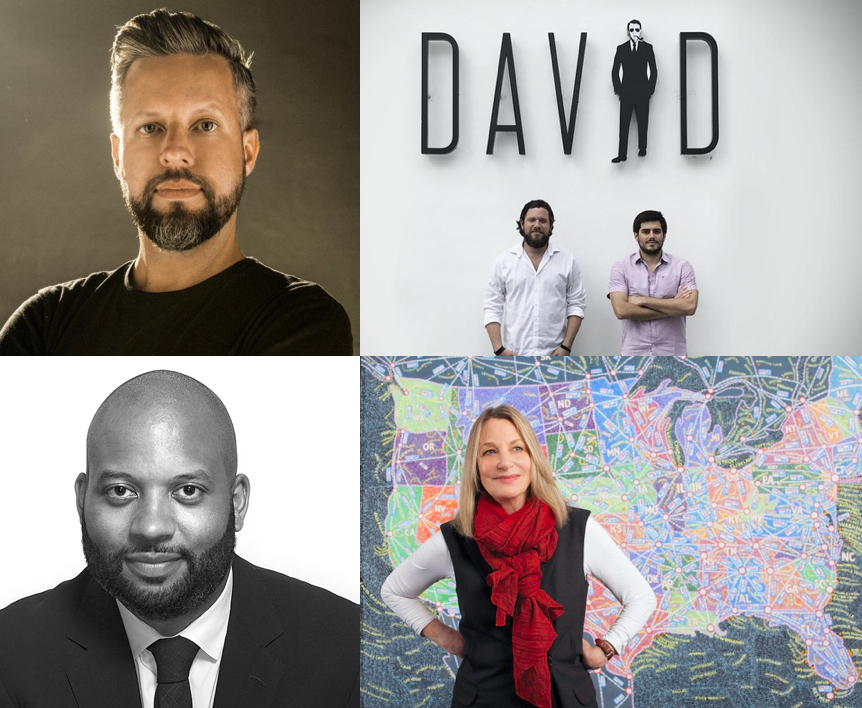
New Season. New Guests. (Clockwise from Top, Left: Anselmo Ramos of GUT, Ricardo Casal and Juan Javier Pena of David, Paula Scher of Pentagram and Bobby C. Martin Jr. of Original Champions of Design.
(By the way, we have toyed with doing a sub-pod about young people who just entered the business. (The A-List The Next Generation?) We’re still working on ironing out how to do that, which was an idea we got from some young listeners. But Casal and Pena from David and Dhruv Nanda from Oberland start us off with some new perspectives from the millennial point of view.)
One more difference in the show this year is the music. Ross Hopman, a friend of the agency at Duotone, loves the show and wanted to help out. We were thrilled of course. But we had no idea how great the results would be. In the end, we couldn’t choose one song, so The A-List Podcast might just be the only podcast out there with TWO theme songs. The one at the end is my personal favorite, based on an off-the-cuff joke to Ross: “If all else fails, just give me something like The Muppet Show theme.” God, I hope Kermit doesn’t sue.
It’s a funny thing about an Inspiring Action, but it almost always gives you more return than you bargained for. Our little podcast (with very little advertising to support it) has reached tens of thousands of people all over the world. We get notes and emails from listeners who have been in advertising for decades telling us how the show has reignited their passion for the business or kept them going during hard times. DiMassimo Goldstein has gotten clients asking us how to make podcasts and young creatives who want to work here. And, of course, Adhouse has never had so many applicants.
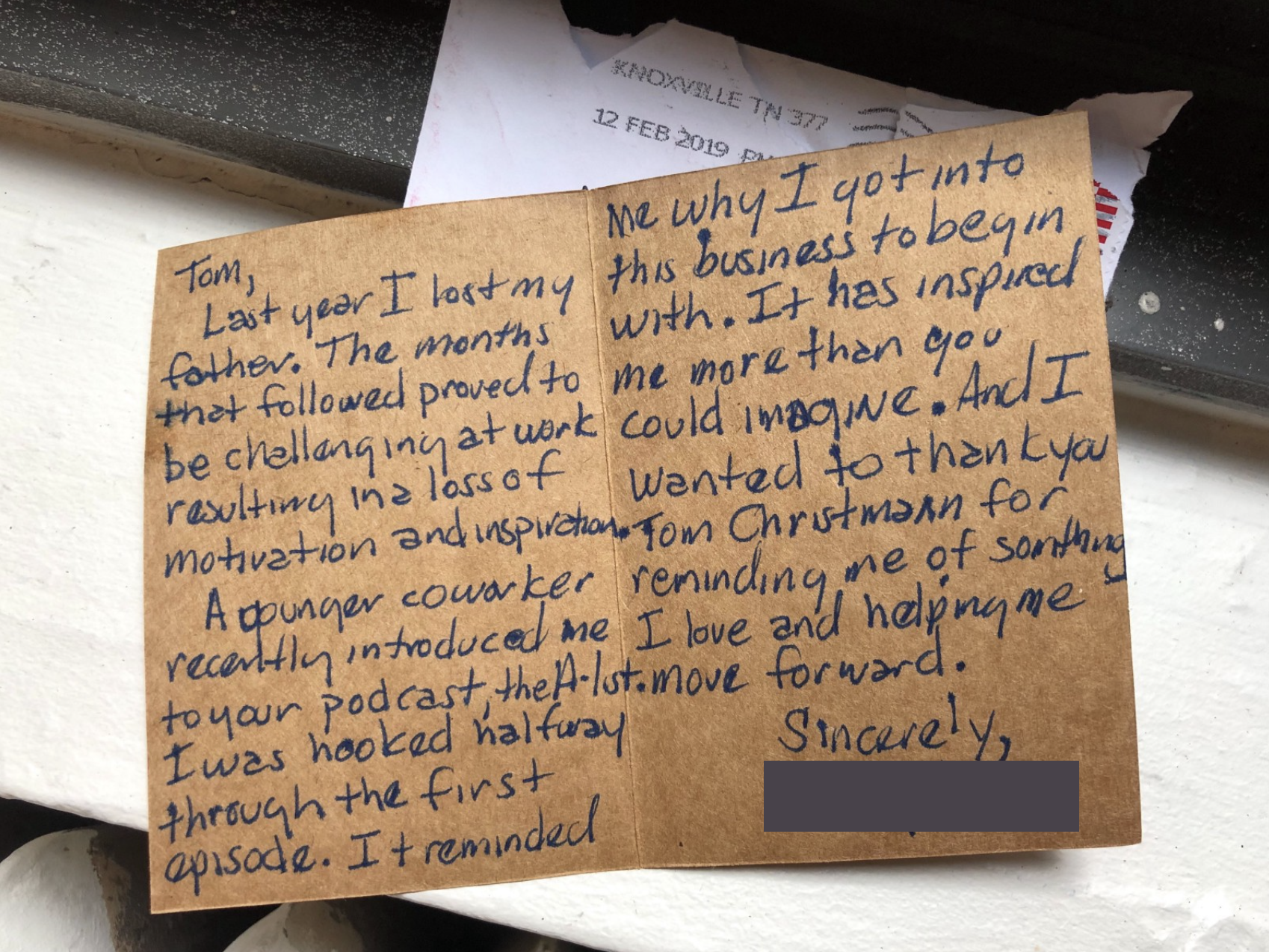
And so it is my pleasure to introduce you to more amazing ad people. That’s the moral of the story of The A-List Podcast by the way: It’s all about the people you meet along the way. This business is full of thousands of amazing people who get to solve problems for the world’s biggest brands in creative, unheard-of ways every day. They did this by finding people who were doing it and learning from them. Our goal was to get more people to imagine themselves doing the same and continue what the Lion King might call the Circle of Ad. Because whether you are a kid from New Jersey like me or a big brand who needs to reinvent yourself, creativity is the way. All you have to do is start a conversation with the right people.
Have we mentioned that season 3 of our podcast launches on Thursday? No big deal. 🙄
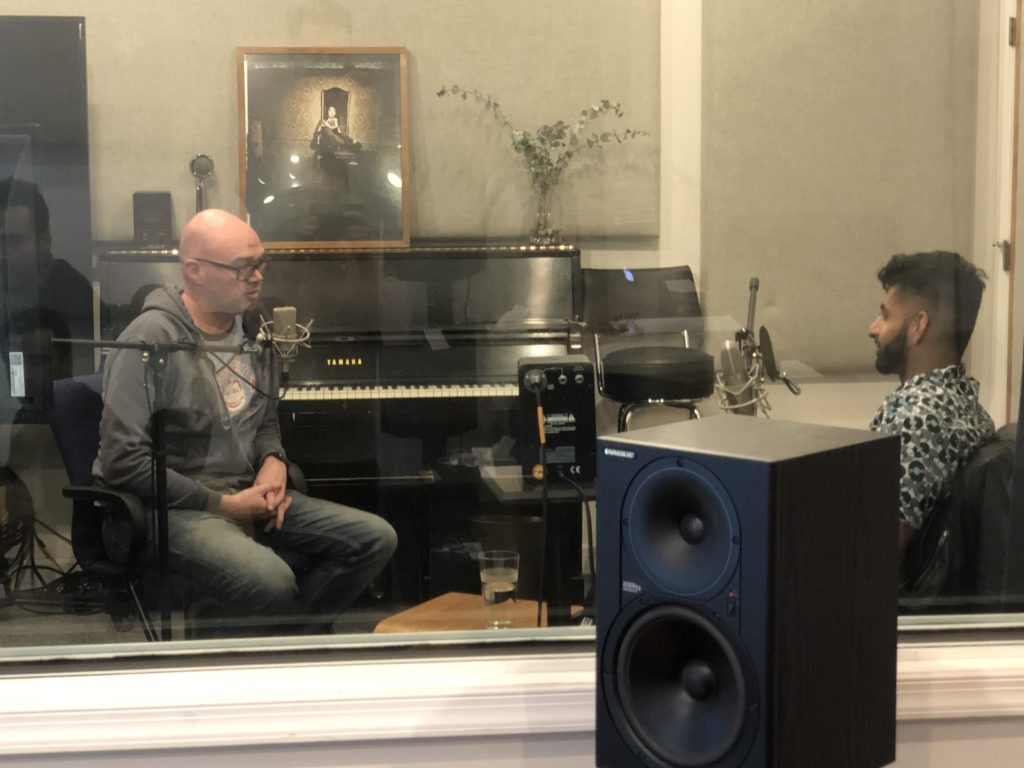
The old guy on the left is me. The cool guy on the right is Dhruv Nanda of Oberland.
By
Team DIGO | 03/15/2019 | in
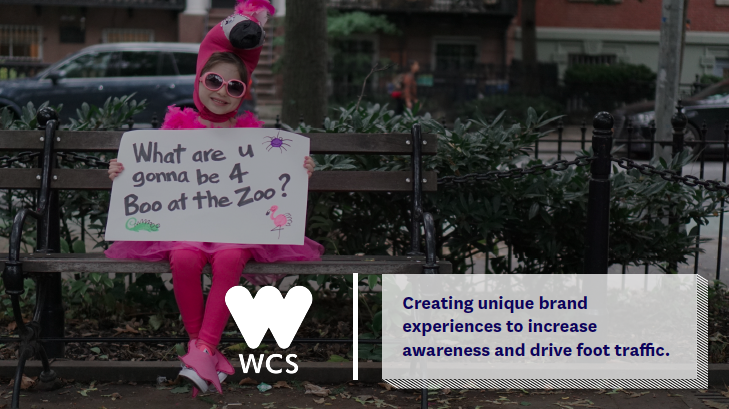
For over a century, The Bronx Zoo has been a cultural landmark in New York City. With over two million visitors a year, the world-renowned zoo has more than earned its reputation as one of the city’s must-see attractions.
But in the summer of 2017, the zoo wasn’t living up to its standard. Attendance was down, and with their annual Halloween event, “Boo at The Zoo,” right around the corner, that needed to change… and quickly.
That’s when they came to us to inspire action.
The Challenge
People love going to the Zoo, but only go once every few years. They assume that once you’ve been once, you’ve seen all that there is to see.
Of course, our client knew that assumption to be far from the truth… there’s always something new to experience at The Bronx Zoo – we just needed to make New Yorkers aware of that.
The Solution
Create memorable “must-come” events in every season to increase brand awareness and drive attendance while making The Bronx Zoo relevant to a whole new audience.
Our client needed to do the urgent fast and the important great, so we got to work right away with “Boo at the Zoo”. We collaborated with our brilliant clients and built a campaign that would Inspire Action by turning an annual tradition into something brand new.
Enter Flamingo Girl…
To bring a new level of anticipation to one of NYC’s premiere Halloween events , we conjured up Flamingo Girl – a precocious, strong-willed seven-year-old dressed in a festive flamingo costume created by one of our talented Art Directors, Katie Renfroe. With the support of the client, we ventured down to Manhattan’s historic Washington Square Park, where we hidden cameras were set up to capture the ensuing magic.
Flocking around in an adorable pink costume with matching sunglasses, Flamingo Girl asked passerby the same question: “What are you gonna be for Boo At The Zoo?”. She charmed the streets of NYC, asking cabbies, statues, tourists, policemen, hot dog vendors, even real dogs.
After capturing the footage, we made a series of little films that acted as both a love letter to New York and an invitation to “the biggest, bestest Halloween event in New York City.”
Flamingo Girl instantly became a viral sensation, appearing all over the internet and social in cute TV spots and in print ads offline. The spots were even named an official honoree of last year’s Webby Awards. Flamingo Girl was both famous and famously effective.
To really bring this campaign to life and make a real impression on New Yorkers, we built The Bronx Zoo Bootique, the first-ever experimental pop-up space from The Bronx Zoo.
The Bronx Zoo Bootique took all the magic of Boo At The Zoo and brought it to the Lower East Side. The pop-up had a face painter, henna tattoos, and costumes that were donated by artists from around the world.
And of course, Flamingo Girl, already a superstar, made time to fly on over and say hello to all her newfound fans.
The campaign was a success, increasing attendance by 13% compared to the previous year, and our client saw a 20% increase in total revenue — the highest performing Boo at the Zoo in six years!
Boogie Down At the Zoo
Building on that momentum, our client and the DiGo team shifted our focus to the spring for the Bronx Zoo’s next innovative event, the first ever “Boogie Down at The Zoo”.
With live performances from hip hop legends like Melle Mel, The Sugar Hill Gang, Grandmaster Caz and graffiti sessions from world-renowned and Bronx-raised artists like John “Crash” Matos, this one-of-a-kind event brought together the best of Bronx culture with the amazing animals featured at the zoo.
The event promotion featured retro-themed video content of the Bronx icons shooting the breeze around the borough in a 1980s-era “Boogie Down Cab”, an old taxi transformed by Crash’s trademark comic-styled graffiti.
The three-month event appealed to a new audience of NYC’s attraction-lovers, social-fun seekers, and culture cravers.
Passport to the World
With the summer nearing, it was time to draw crowds back to the zoo for their next seasonal event, “Passport to The World” – a showcase of the many regions the Wildlife Conservation Society works in.
Our design team built a brand identity and campaign that highlighted vast wildlife from around the world and celebrated global cultures. With beautifully illustrated travel posters strategically placed throughout New York City subway kiosks, this worldly summer experience was put on display for thousands of daily commuters, building anticipation and driving traffic to event-branded landing pages and videos.
Three straight seasons. Three unique must-see events.
And most importantly, three fantastic reasons for visitors to return – and they did.
During our partnership with The Bronx Zoo, we helped make one of New York City’s most iconic institutions a place where attendees of all ages could come and immerse themselves in cultural adventures that went way beyond the world-class animal exhibits. Each of these events offered unforgettable experiences, appealed to a younger influencer audience, and turned casual zoo-goers into lifelong brand devotees with memories to last a lifetime.
That’s #InspiringAction















